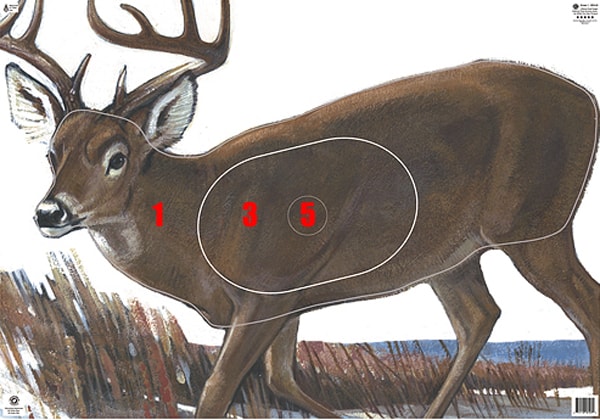Over the past couple of weeks, I’ve been pouring a lot of time and effort into the idea of starting up a Paper Animal Series at my local archery club. I tried to model it after the old Keystone Federation shoots and the more time I spent working on the project, the more excited I became.
There is one aspect of the event that I’ve been avoiding – the finances. It hasn’t been nearly as fun but I’ve spent the last two days roughing out what it would cost to host this seies versus the potential income it could produce.
Cost of Entry
Generally speaking, the events that cost the least amount of money at my club are the Field events. They don’t require electric to light the course, oil to heat the range, and replacement targets are inexpensive compared to 3D.
This lead me to believe that the club’s cost of entry for the series would be minimal. In the grand scheme of things, I suppose it is. Unfortunately, there is a very real possibility that the club could lose money in this undertaking. Everything hinges on shooter turnout.
Registration Fee
I’ve been grappling with the issue of registration fees ever since I decided to move forward with this series. At what point does the shoot change from being a good value to being too expensive and not worth the money?
That is a tough question and I think it has a lot to do with the number of targets being shot. Back in the days of the Keystone Federation I seem to remember registration fees being $5 for Adults – which covered 4 Arrows at 30 Targets (120 Shots averaging $0.04 per shot).
These days things are a lot more expensive. If we look at 3D, most clubs charge $10 for 30 Animals (30 Shots averaging $0.33 per shot). Indoor is typically more expensive and ranges from $12 to $14 with 32 shots.
In both cases I can justify the cost. 3D Targets are not cheap – some of them cost hundreds of dollars. Replacement inserts are no exactly cheap either. In the case of Indoor you also have to tack on the cost to heat and light the building. The club simply has to charge more to offset the costs and make a little money.
Our Field League is a 14 target unit with 4 arrows per target. We charge $6 per week (56 arrows averaging $0.11 per shot) and that doesn’t strike me as being out of line either. The target butts need maintenance but that doesn’t really cost much. Targets can get a little pricey but our club buys in quantity to help with that.
That still leaves us with the question “How much do we charge for the Paper Animal Series?”.
As much as I’d like to see us charge Field League pricing, it just isn’t feasible. There are too many costs associated with the series to keep costs that low. On the other hand, I have a hard time with the idea of charging 3D pricing because the costs are significantly lower.
I’ve gone back and forth with numbers and I’ve finally settled on the following
- Adult Member: $8
- Adult Non-Member: $10
- Youth: $6
- Cub: FREE
Our club has been trying to give members a small break on the price of shoots in the hopes that we will see an increase in membership. I don’t know how much that has influenced potential members but I sure do appreciate paying a little less as a member.
I’m pretty sure we’ll be using one 14 target unit (I’d love to use two but you’ll see why that becomes problematic down below) so the price breakdown effectively becomes $0.14 per arrow for Adult Members, $0.18 for Adult Non-Members, and $0.11 for Youth.
Awards
By far, the biggest expense associated with this series is going to be the awards. In past events what we’ve done is purchase stock medals (all the same size / shape / color) and have them engraved on the back. I believe they cost us about $7 per medal when purchasing at least 10.
Determining how many awards we’ll need is difficult. Just to put a number on it, I went ahead and assumed that at a minimum we’ll have one person in each class and division. Those shooters, plus an additional 3 for “High” awards comes in at 28 medals. Assuming that the cost is still $7 per medal, we come in at $196.
On the other end of the spectrum, if we assume that we have enough shooters that require the maximum number of awards, we’ll need 78 medals at a cost of $546. This figure is likely to come down due to quantity.
I’d love to order the awards to have on hand for the final shoot in the series but I don’t think that is possible. Financially, the better decision is to wait and order exactly what we’ll need when the series is over. This will allow us to order exactly what we’ll need and not leave us with extra awards.
Targets
The next expense we need to take a look at is paper targets. Depending on which retailer we use, pricing varies considerably. The best source I’ve found so far has large targets listed at $2.50 each and smaller targets at $1.22.
Using the distance chart for my club, I’m guessing we’ll need 12 large targets and 60 smaller targets. This is assuming that we use a 14 target unit and replace targets each month. The cost comes in at roughly $105 plus shipping.
If we were to use both of our Field Courses (28 Targets) the cost would basically double. I think doubling down is the better plan, however, adding another $105 to the bottom line is scary. I haven’t the slightest idea what kind of turnout we can expect at this point and I’d hate to see the club lose money.
Profit
At this point I’ve made a whole bunch of assumptions and we’re playing with some very rough numbers. Taking this a step further, we can say that at a minimum hosting this event will cost the club $301 (assuming 28 awards). Using this figure it would require us to have 37 Adult Member shooters to break even.
On the other end of the spectrum, if we hand out the maximum number of awards the cost to the club would be $651. In this case we would need 82 Adult Member shooters to break even.
Shooter turnout is for the series as a whole. When you divide those numbers by 3 months it isn’t as scary – 13 per month / 29 per month.
Again, I don’t know what to expect for turnout so these numbers could be wildly different from actual figures.
Using the same rough figures, and muddying the waters further, we can begin to estimate some sort of profit. In the event that we hand out 28 awards (with minimal turnout to support 28 awards) the club will actually lose money (NET -$150).
If we have enough shooters to hand out 1st and 2nd place awards for all classes and divisions (assuming we have 5 shooters for all classes and divisions) the club will make a little money (NET $274).
If we have enough shooters to hand out the maximum number of awards (10 shooters for all divisions and classes) the club will make a considerable profit (NET $884).
All of these situations are highly unlikely but I need something to present to the club (and it is painfully obvious that I’m not suited to make accurate estimates in this situation). Since we have never tried a shoot like this before, I have no previous data to look back on for more accurate figures.
Another revenue stream in all of this is the kitchen. The idea is to sell food but kitchen sales for previous events are all over the place. I’m certain that the kitchen will make some money but I have no idea how much.
Final Thoughts
The best option for the club, if they decide to run with this event, would be to purchase all of our targets at once and hope for a club discount and/or free shipping. With the targets on hand we could run the event, figure out exactly what we need for awards, and place the order at that time.
It isn’t as fun having to hand out awards after it is all said and done but it is the best way to ensure that we won’t throw money away on awards that will go to waste. Handling it this way makes the up-front cost much easier to swallow.
Additional Reading
- Building an Archery Series: Modified Animal Round
- Building an Archery Series: Modified Animal Round (Rules Revision 1)
- Building an Archery Series: Estimating Costs
- Building an Archery Series: Putting it all Together

Recent Posts
The Price of Rushing: A Winter Riding Story & Four Years of YouTube Friendship
You know those moments when you do something that isn't exactly catastrophically stupid, but just stupid enough to make you shake your head at yourself? Yeah, we've all been there, and today I'm...
Finding Joy in Unexpected Places: A Memorable Motorcycle Ride to Remember
As we roll into 2025, I've been reflecting on the rides that made 2024 special. While the year didn't provide as many opportunities to hit the road as I'd hoped, one particular adventure stands out...


